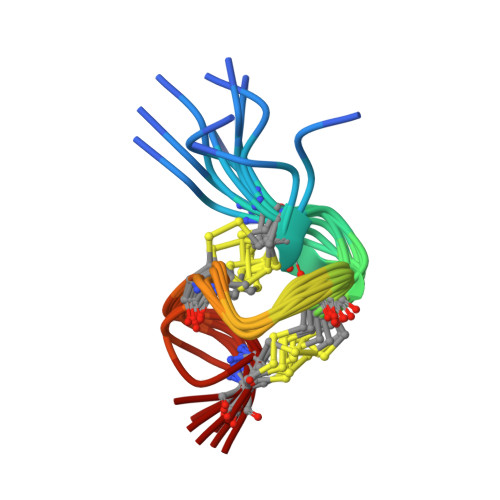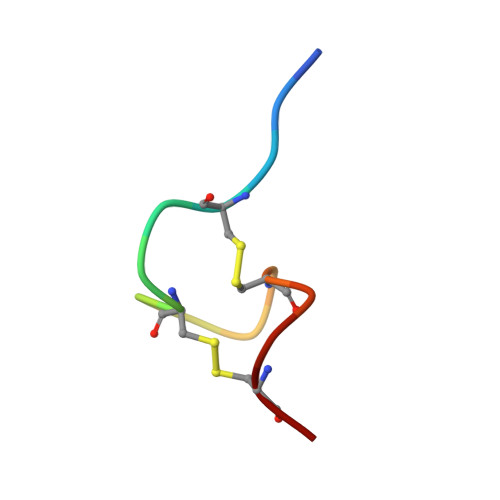One peptide, two topologies: structure and interconversion dynamics of human uroguanylin isomers.
Marx, U.C., Klodt, J., Meyer, M., Gerlach, H., Rosch, P., Forssmann, W.G., Adermann, K.(1998) J Pept Res 52: 229-240
- PubMed: 9774236
- DOI: https://doi.org/10.1111/j.1399-3011.1998.tb01480.x
- Primary Citation of Related Structures:
1UYA, 1UYB - PubMed Abstract:
The peptide hormone uroguanylin stimulates chloride secretion via activation of intestinal guanylyl cyclase C (GC-C). It is characterized by two disulfide bonds in a 1-3/2-4 pattern that causes the existence of two topological stereoisomers of which only one induces intracellular cGMP elevation. To obtain an unambiguous structure-function relationship of the isomers, we determined the solution structure of the separated uroguanylin isoforms using NMR spectroscopy. Both isomers adopt well-defined structures that correspond to those of the isomers of the related peptide guanylin. Furthermore, the structure of the GC-C-activating uroguanylin isomer A closely resembles the structure of the agonistic Escherichia coli heat-stable enterotoxin. Compared with guanylin isomers, the conformational interconversion of uroguanylin isomers is retarded significantly. As judged from chromatography and NMR spectroscopy, both uroguanylin isoforms are stable at low temperatures, but are subject to a slow pH-dependent mutual isomerization at 37 degrees C with an equilibrium isomer ratio of approximately 1:1. The conformational exchange is most likely under the sterical control of the carboxy-terminal leucine. These results imply that GC-C is activated by ligands exhibiting the molecular framework corresponding to the structure of uroguanylin isomer A.
Organizational Affiliation:
Niedersächsisches Institut für Peptid-Forschung, Hannover, Germany.


















